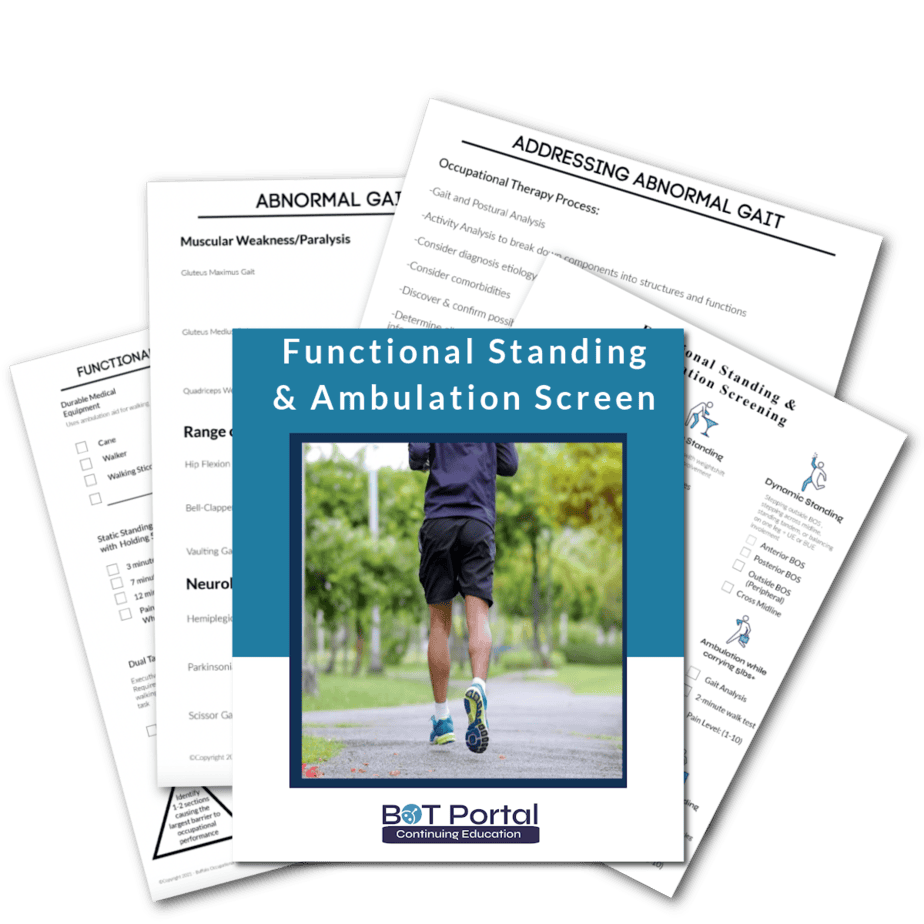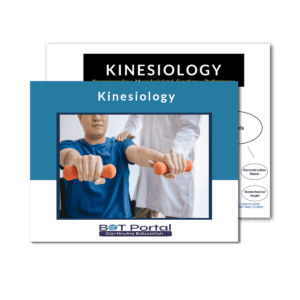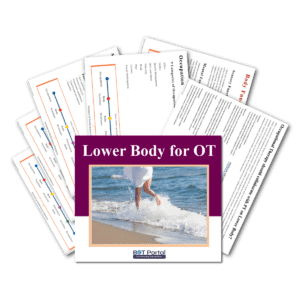Description
Functional Standing and Ambulation Handout
Functional Standing and Ambulation Ideas for Occupational Therapy
Occupational therapy often includes a comprehensive functional standing and ambulation screen to assess a patient’s mobility and determine the need for durable medical equipment (DME). This screening process evaluates various aspects of standing and walking, ensuring the patient can safely and effectively perform daily activities.
Here are the key components of this assessment:
1. Assessment for Durable Medical Equipment (DME):
– Evaluate the need for assistive devices such as canes, walkers, or wheelchairs.
– Determine the appropriate type and fit of DME to enhance mobility and safety.
2. Static Standing:
– Assess the patient’s ability to maintain an upright posture without movement.
– Evaluate balance and stability while standing still.
3. Dynamic Standing:
– Observe the patient’s ability to maintain balance while performing small movements, such as shifting weight or reaching.
4. Static Standing with Holding 5 lbs:
– Test the patient’s ability to stand still while holding a 5-pound weight.
– Assess the impact of additional weight on balance and stability.
5. Ambulation to Assess Gait:
– Observe the patient’s walking pattern, including heel strike, toe-off, stride length, and cadence.
– Identify any abnormalities or issues in the gait cycle.
6. Ambulation While Carrying 5 lbs:
– Evaluate the patient’s ability to walk while holding a 5-pound weight.
– Assess how carrying weight affects balance, posture, and gait.
7. Ambulation with Obstacles:
– Test the patient’s ability to navigate around obstacles such as cones or small barriers.
– Assess coordination, balance, and spatial awareness.
8. Dual Tasking:
– Challenge the patient to perform a secondary task while walking, such as talking, carrying an object, or counting.
– Evaluate cognitive and motor integration during ambulation.
9. Ascending and Descending Stairs:
– Assess the patient’s ability to go up and down stairs safely and efficiently.
– Evaluate balance, strength, and coordination required for stair navigation.
By conducting this comprehensive functional standing and ambulation screen, occupational therapists can identify specific areas of difficulty and develop personalized intervention plans. These plans may include recommending appropriate DME, targeted exercises to improve balance and strength, and strategies to enhance overall mobility and safety in daily activities.
What is included:
- 3 page resource with ambulation and standing screening items
- 1 page Functional Standing and Ambulation Screening Tool – illustrated
- Abnormal gait patterns in written form to write one
- Examples of an occupational therapy approach for functional standing and ambulation




